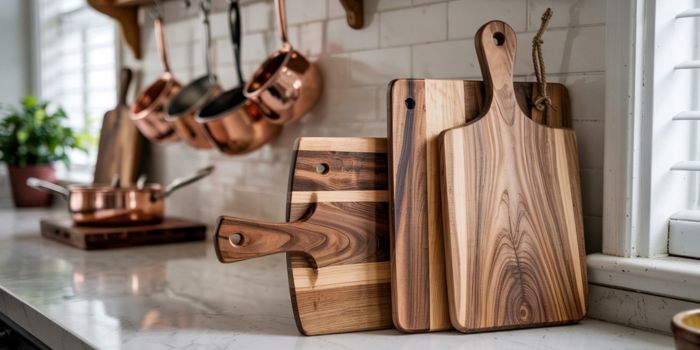Seeking an ideal wooden cutting board to boost your culinary skills? Examine our curated assortment of top-tier wooden cutting boards designed for long-lasting durability and exceptional performance.
These boards provide an organic cutting surface which maintains knife sharpness while delivering visual appeal whether you cut crusty bread or prepare fresh produce. Manufactured using high-quality hardwoods such as maple, walnut, and acacia, each board merges practicality with eternal elegance.
Moreover, the integrated juice grooves combined with non-slip edges enhance everyday functionality. Is it time for you to enhance your collection of fundamental kitchen tools? Investigate the cutting boards that receive endless praise from both professional chefs and home cooks!
Top Picks 6 Wooden Cutting Boards for Kitchen
1. John Boos Boos Block RA-Board Large Reversible Wood Cutting Board,
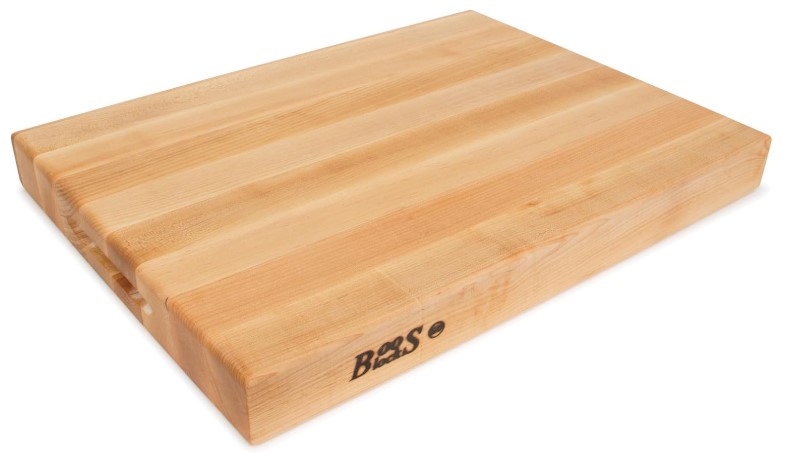
Pros and Cons:
- Pros: Extremely durable, large surface area (ideal for big cuts of meat), juice grooves prevent mess, classic look enhances kitchen aesthetics, NSF certified for professional use.
- Cons: Heavy (may be cumbersome for some), requires regular maintenance (oiling), higher price point (depending on size).
The John Boos Boos Block RA-Board Series Large Reversible Wood Cutting Board stands as the quintessential kitchen ally through its blend of robust construction and refined aesthetics. This reversible cutting board constructed from premium hardwood delivers expansive meal prep space while presenting dual surfaces for both cutting and serving tasks.
The intricate natural grain patterns boost aesthetic appeal while robust construction guarantees durable performance. Its intricate design serves amateur chefs and seasoned professionals by reducing knife dulling while safeguarding countertops.
This cutting board transforms your culinary tasks into sophisticated experiences while you slice vegetables, carve meats, and prepare fruits.
Why It’s Recommended:-
This board is recommended for its balance of durability and affordability compared to end-grain options. Its juice grooves make it ideal for preparing meats like roast beef or turkey, and its reversible design doubles the usable surface before maintenance is needed. It’s a favorite among professionals and home cooks for its longevity and performance,
2. The Boardsmith Maple End Grain Cutting Board

Pros and Cons:
- Pros: Extremely gentle on knives, durable (resists warping with care), beautiful aesthetic, customizable options.
- Cons: More expensive than edge-grain boards, heavier due to thickness, requires regular oiling.
Manufactured in the USA by The Boardsmith, this Maple End Grain Cutting Board is for those who appreciate both functionality and aesthetics and are serious about food. It is constructed using hardwood strips to create a working surface cut in a checkerboard pattern across the grain.
This end-grain construction allows for a soft resilient surface that provides ease of cutting and easy on cutting edges, helping cutting edges stay sharp longer.
The available size is approximately 18″ long x 12″ wide x 2″ thick for about 10 lbs. Customization can include juice grooves or feet for added stability and usability. There is a lifetime guarantee, which represents the quality and construction.
Why It’s Recommended:
Recommended for frequent chopping tasks, its end-grain design not only protects knives but also self-heals, closing small cuts to prevent bacteria growth. It’s ideal for home chefs who invest in high-quality tools,
3. Ironwood Gourmet End-Grain Acacia Wood Cutting Board
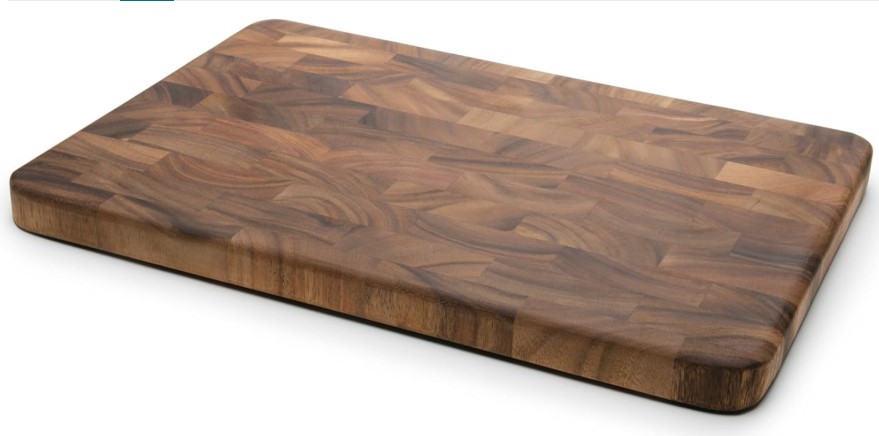
Recipe Idea: Fruit Salad
- Slice melons, berries, and citrus fruits on the board.
- Mix in a bowl with honey and mint leaves.
Pros:
- Affordable without compromising quality.
- Resistant to cracking and warping.
Cons:
- Non-slip feet limit usability on one side of the boar
Transform your kitchen experience with the functional and beautiful Ironwood Gourmet End-Grain Acacia Wood Cutting Board. This cutting board combines sustainable acacia wood with a beautiful end-grain structure which provides both knife protection and remarkable strength.
Its natural wood grain looks warm and rustic which makes any countertop better while you slice, dice or serve.
This board can handle intense daily use while preventing deep cuts which makes it essential for both dedicated cooks and entertaining hosts. Seeking an upgrade that adds style and functionality to your kitchen preparation area? This board combines expert craftsmanship with charming details throughout its design.
Why It’s Recommended:– Crafted from durable acacia wood, this board offers beauty, longevity, and knife-friendly performance—perfect upgrade
4. Sonder Los Angeles End-Grain Walnut Cutting Board
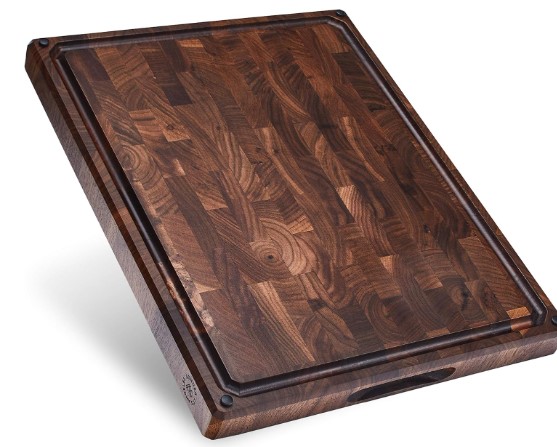
Pros:
- Stunning walnut finish enhances kitchen decor.
- End-grain construction offers superior durability.
Cons:
- Higher price point compared to similar boards
The Sonder Los Angeles End-Grain Walnut Cutting Board combines elegance with practicality to take your kitchen to the next level. A sustainable walnut source produces this cutting board with an end-grain design that protects knives and repairs itself while earning chefs’ love for its lasting durability.
The built-in handles provide easy versatility for both preparation and presentation while deep juice grooves ensure all liquids are captured. This board serves as both a functional tool for chopping and carving and a stunning centerpiece that adds sophistication and warmth to any room.
This board serves as a kitchen essential with serious style while appealing to people who appreciate quality and aesthetics. Learn the reasons behind chefs and cooks’ enthusiastic praise for this product.
Why It’s Recommended:-Crafted for durability and beauty, this walnut cutting board protects knives and enhances kitchen elegance
5. JK Adams Williston Large Cutting
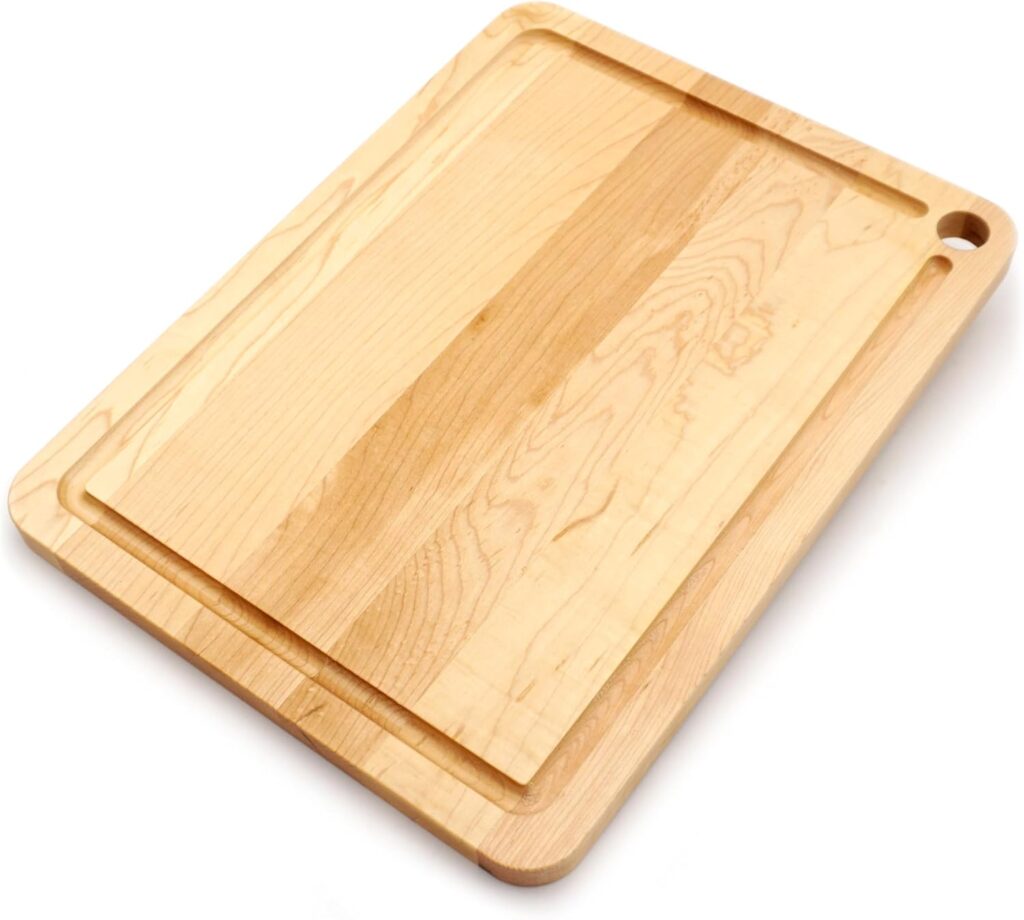
Pros:
Made in the USA with sustainably harvested wood
Spacious and sturdy for big prep jobs
Easy on your knives
Cons:
Needs regular oiling to maintain quality
Heavier than composite boards
Looking for a beautiful and trustworthy addition to your kitchen? The JK Adams Williston Large Cutting Board combines Vermont craftsmanship with sustainable maple wood for a surface that’s durable as well as beautiful. Its generous size gives you all the space you may need to prep everything from crusty bread to family-sized roasts. Built to last, it will be gentler on knife edges while serving as a great serving piece.
Why It’s Recommended:-Experience premium craftsmanship and lasting durability with the JK Adams Williston Large Cutting Board—elevate every meal
6. Totally Bamboo Kona Groove Cutting Board
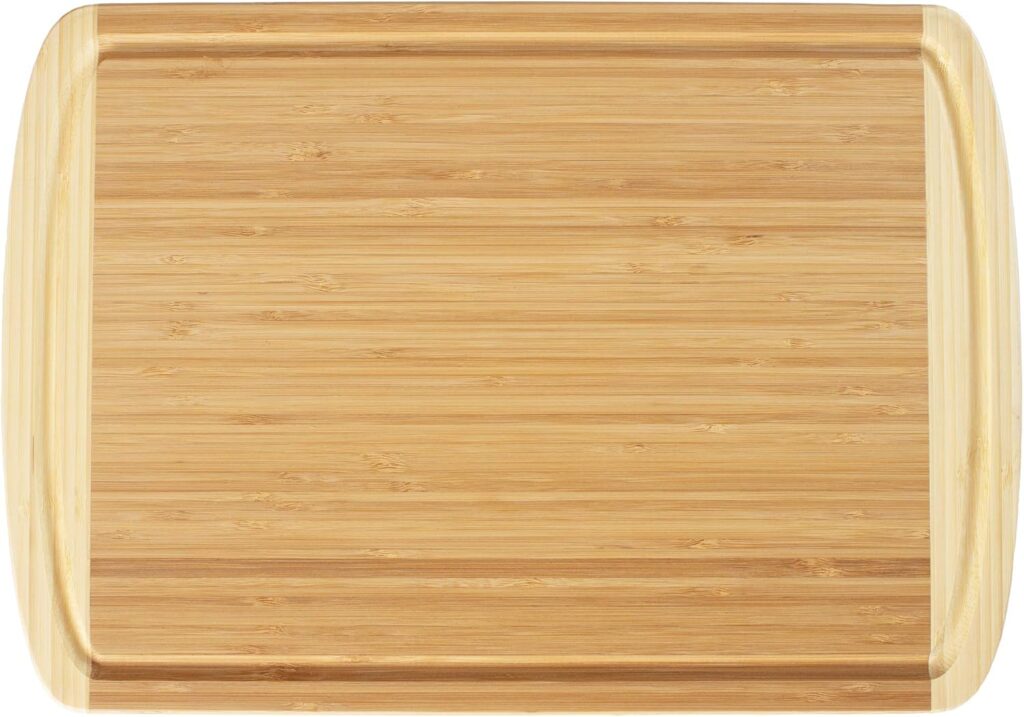
Pros:
- Lightweight and easy to handle.
- Naturally antimicrobial properties.
- Affordable price point.
Cons:
- Not as durable as hardwood boards.
- Can dull knives over time if overused.
Are you on the search for a gorgeous yet functional cutting board? The Totally Bamboo Kona Groove Cutting Board brings that island vibe straight to your kitchen with its rich natural bamboo grain and built-in juice groove for clean slicing. Lightweight but durable, it is ideal for everyday use—and serves as a great serving platter.
Why It’s Recommended:– Bamboo is an eco-friendly alternative to traditional hardwoods. This board features deep grooves that make it ideal for carving meats or juicy fruits.
Wooden Cutting Boards: Care Tips
To ensure your wooden cutting board lasts for years:
- Hand wash with mild soap; avoid soaking in water.
- Dry immediately with a towel.
- Oil regularly using food-grade mineral oil or beeswax to prevent cracking.
conclusion
A high-quality wooden cutting board is more than just a prep surface—it’s a kitchen essential that enhances both functionality and style.
Whether you’re a home cook or a seasoned chef, choosing the right board depends on your needs: end-grain boards offer superior durability and knife-friendliness, edge-grain options strike a great balance between performance and price, and bamboo boards are an eco-friendly alternative with a sleek look.
When selecting the best wooden cutting board, prioritize hardwoods like maple, walnut, or cherry, and look for features like juice grooves, non-slip feet, and easy maintenance. With the right care, a quality wooden cutting board will not only protect your knives and countertops but also become a timeless tool in your culinary space.
Frequently Asked Questions
1. Why choose a wooden cutting board over plastic or glass?
Wooden cutting boards are favored for their durability, natural antibacterial properties, and their gentleness on knife blades. Unlike glass, they won’t dull your knives, and unlike plastic, they don’t develop deep grooves that can harbor bacteria.
2. What types of wood are best for cutting boards?
The best wooden cutting boards are made from:
- Maple – Hard, durable, and naturally antibacterial.
- Walnut – Softer than maple, gentle on knives, and aesthetically rich.
- Cherry – Smooth grain, attractive tone, and ages beautifully.
- Teak – High in natural oils, making it water-resistant and low maintenance.
- Acacia – Affordable, durable, and water-resistant, though often used in budget boards.
3. What’s the difference between end grain and edge grain boards?
- End grain boards are made from the ends of the wood and show a checkerboard pattern. They’re self-healing and more gentle on knives.
- Edge grain boards are made by laying boards side-by-side. They’re more affordable and durable but slightly tougher on knife edges.
4. How do I clean a wooden cutting board?
Wash by hand with mild soap and warm water. Never soak or put it in the dishwasher. Dry immediately with a towel and stand it upright to air-dry fully.
